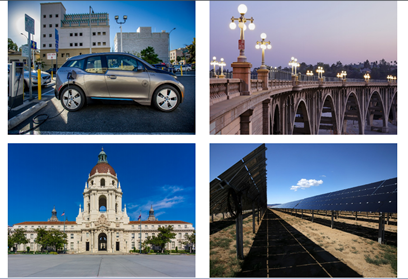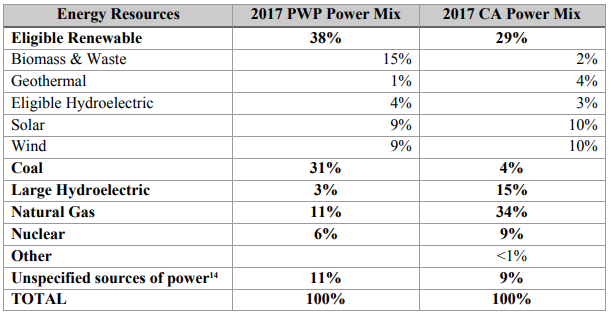Welcome to the
Run on Sun Monthly Newsletter

In this Issue: |
January, 2019
Volume: 10 Issue: 1
We're Turning Ten!
So that's it, ten thoughts for ten years. Thanks for being a part of this journey! |
“The problem of orphaned and/or legacy systems is growing…”
Clean Power Alliance is Coming - is that a Good Thing?
Let's start with the basics, what is a CCA? Here's a definition from an EPA website:
That means that current SCE customers would still receive their service via SCE (including billing) but the energy is actually provided by the CCA, in this case CPA, at one of three rates: "Lean" (which is 36% renewables and lower than SCE), "Clean" (which is 50% renewables and comparable to SCE), and "Green" (which is 100% renewables and higher than SCE). Different cities can choose for their residents the "default" rate - for example, Arcadia chose Lean, Alhambra chose Clean, and South Pasadena chose Green - but individual consumers can override that default and pick the rate they prefer. (You can find the present list of cities switching to CPA and their default rates here.) However, the only portion of the bill affected is the energy charge, which is generally a smaller component than is delivery. For example, here is a comparison for SCE customers on the Domestic rate for what they pay now compared to under the "Lean" option from CPA:
So your savings is about 10% on the first 300 or so kWh (or about $5), but if you make it into the highest tier, your savings drops to just 4.5% on the largest usage. (Interestingly, SCE's delivery rates changed a lot more than what is seen in this shift to CPA's Lean rate. In particular, the delivery charge for the lowest tier went up by 5.8% as of January 1st, and by 22% for Tier 3 - ouch!) You can find the complete list of CPA's rates as of this writing, here. |
Pasadena Adopts New Integrated Resource Plan
Where are we now?We love Pasadena, but it has a long way to go before it becomes as green as we would like it to be. For example, here is PWP's latest power content label that shows the sources of its electricity, compared to California as a whole:
Yikes! 31% of our power overall comes from burning coal - compared to just 4% for the state overall! Somewhat surprising is the relatively low amount of natural gas in the mix, given that the Glenarm power plant is now entirely fueled by natural gas. On the other hand, the City is doing very well in utilizing biomass and waste materials as a fuel source, well ahead of such efforts in the state as a whole. So it is clear that a great deal of work is yet to be done, and it is the intent of the newly adopted IRP to show the way. One thing that jumps out of the new plan is that coal is to be eliminated entirely by June of 2027 when existing supply contracts expire, and no new coal contracts will be signed. Moreover, that plant is scheduled to switch to natural gas by 2025, so coal burning for PWP should end by then. Distributed Energy ResourcesAs of the writing of the IRP, there were 1,303 PWP customers who have installed solar power systems at their homes or commercial/non-profit sites. Collectively, those systems amount to 10.4 MW of installed capacity, with an estimated annual production of 16,600 MWh of energy. That makes the average installed system size just under 8 kW. One baffling detail in the planning section of the report: relying on a levelized cost of energy (LCOE) analysis by the Lazard consulting firm, they assert that the LCOE of residential solar (after allowing for the federal tax credit) is from 14.5-24¢/kWh! Frankly, we aren't sure how they arrived at that number, since our projects generally project an LCOE in the 9-11¢/kWh range. So more solar is in PWP's future, but they won't be supporting it on homes, schools, or businesses anymore. Sad. Other Takeaways...Here are a couple more takeaways from the 249-page report:
You can find the entire report here: Pasadena's Integrated Resource Plan. |
“We love Pasadena, but it has a long way to go before it becomes as green as we would like it to be…”
Get your copy of
Commercial Solar:
Step-by-Step
from
Run on Sun
Founder & CEO
Jim Jenal

Now available on Amazon.com
in both
Print & Kindle versions.
Commercial Solar:
Step-by-Step
from Run on Sun
Founder & CEO
Jim Jenal

Now available on Amazon.com
in both Print & Kindle versions.





